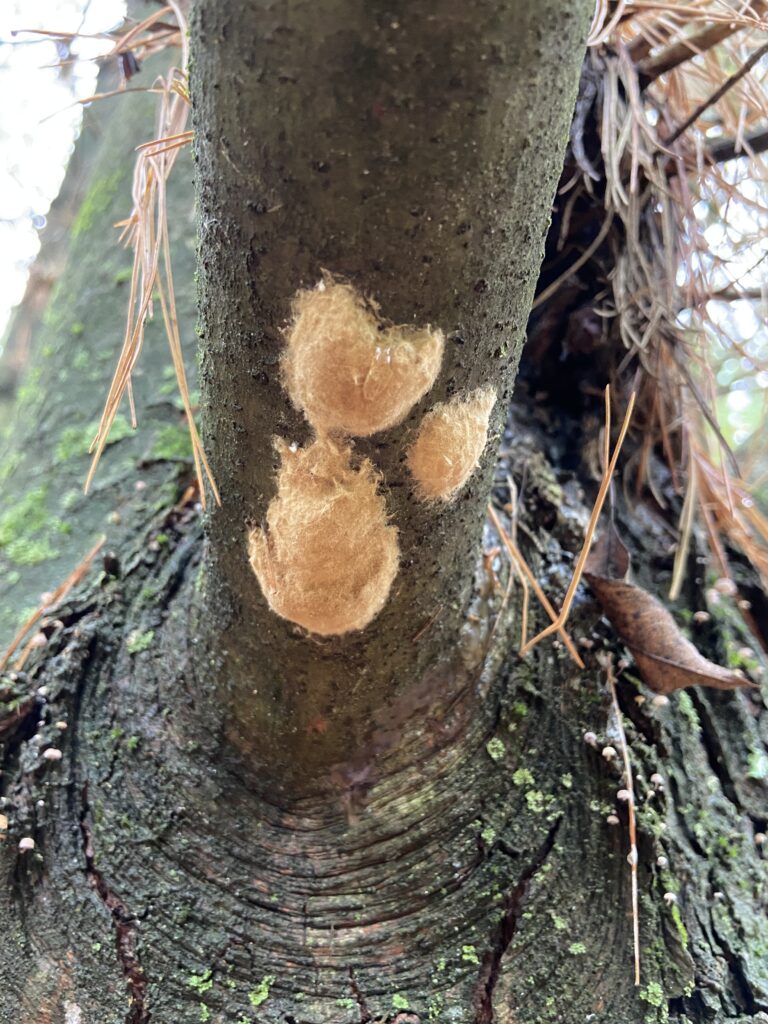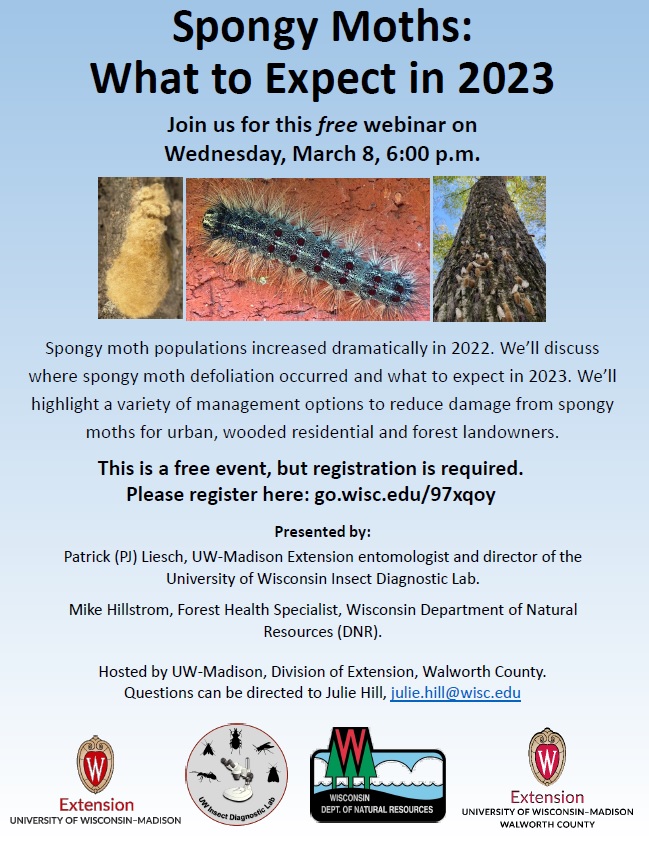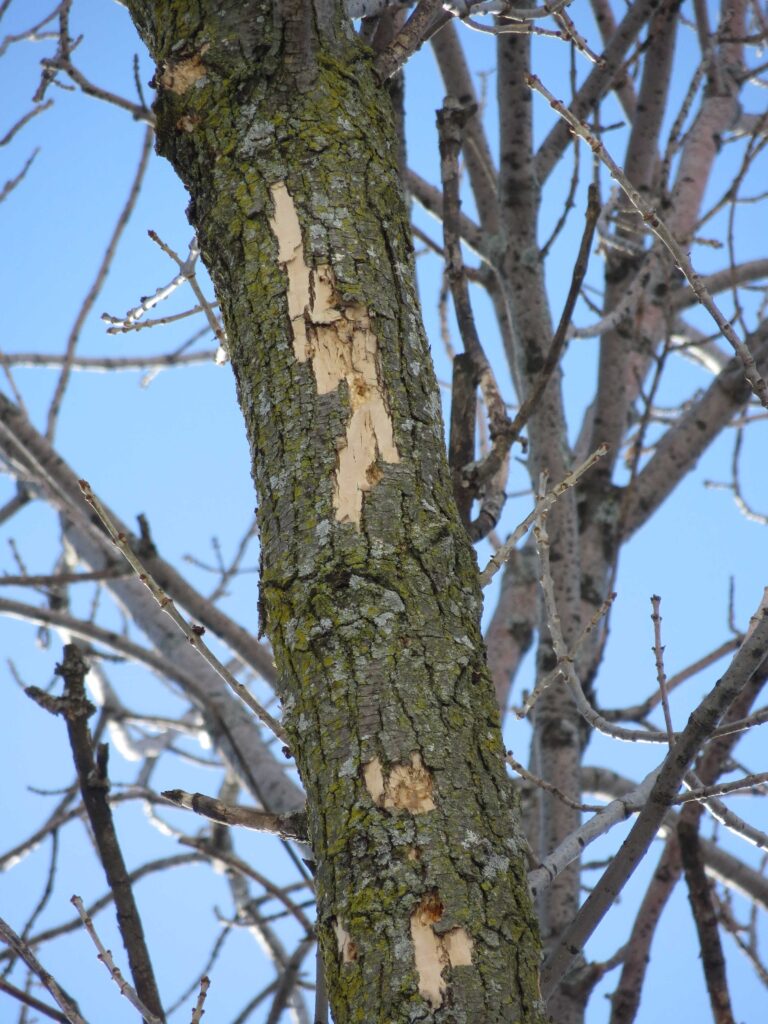By Bill McNee, DNR Forest Health Specialist, Oshkosh, Bill.McNee@wisconsin.gov or 920-360-0942
Spongy moth (formerly known as gypsy moth) egg masses typically begin to hatch in April as temperatures warm. Each mass that hatches may produce up to 1,000 leaf-eating caterpillars.
Now is a great time to inspect your trees for egg masses and treat or remove any masses within reach. Wisconsin weather has been favorable for this pest over the last three years and populations have grown.

Three spongy moth egg masses on the underside of a pine branch in Walworth County. Photo: Bill McNee, Wisconsin DNR.
Continue reading “Make Plans To Control Spongy Moth Before The Eggs Hatch”


